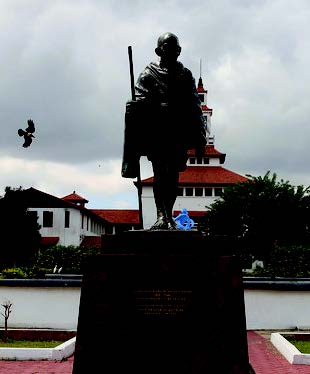
Bordered by China, Nepal and Bhutan, Sikkim has long been regarded as one of the last Himalayan Shangri-las. Because of its remoteness and the fact that permits are required, Sikkim isn’t the most accessible area to visit in India. However, it certainly is one of the most energetic and refreshing. There’s something very soothing to the soul about the mountainous beauty and ancient Tibetan Buddhist culture in Sikkim
Monasteries
In testament to the fact that Sikkim is a marvelous place for meditation, almost 200 monasteries dot the divine hilltops. The most visited monasteries in Sikkim are Rumtek (overlooking Gangtok), Pemayangtse (near Pelling in West Sikkim),and Tashiding (also in West Sikkim). Other monasteries that are worth visiting include the Karma Kagyu monastery with its 200 year old murals (in Phodong in North Sikkim), the Enchey monastery (in Gangtok), and the old Sanga-Choeling monastey (only accessible on foot from Pelling). The monasteries hold many festivals, particularly around Losar in February/March. Tse Chu, in July, features Buddhist dancing at Rumtek. Enchey also hosts a Chaarm festvial in December/January.
Yuksom and the Dzongri Trail
Sikkim is a trekker’s paradise. The trek from Yuksom to Dzongri Peak, and further on to Goecha Peak if you’re up for the challenge, is the most popular trek in Sikkim. It passes through the unspoiled forests, magnificent rhododendron gardens, and powerful rivers of Kachenjunga National Park. Additional trekking permits are mandatory for foreigners. These are available at Tourism offices in Gangtok, or else contact Sikkim House in Chanakyapuri, New Delhi.
Teesta River Rafting
River rafting is the latest adventure activity to arrive in Sikkim, and the Teesta River offers some world class opportunities. The major route is Makha-Sirwani- Bardang-Rongpo. Grade 2 to 4 rapids are interspersed with placid patches to float along, and plenty of white sandy beaches exist for overnight camping. High cliffs and gorges, along with bolder-strewn river beds, add to the thrill. The Rangeet River, with its more turbulent waters, also offers advanced rafting opportunities from Sikip-Jorethang- Majitar-Melli. The best time for rafting in Sikkim is from March to May and October to December.
Flora and Fauna Sanctuaries
Sikkim is renowned for its astounding variety of birds, animals, and flowers — over 450 species of birds, 400 species of butterflies, 450 varieties of orchids, and 40 species of rhododendron. Two of the best places to see them are the Deorali Orchid Sanctuary in south Gangtok (visit from March to early May and the end of September to early December), and Kyongnosia Alpine Sanctuary around an hour from Gangtok on the way to Tsomg Lake and Nathu La (vist from June until October).
Nathu La Pass and the Old Silk Route
If you’re really feeling adventurous, nothing compares to a journey along the former Old Silk Route to Nathu La, three hours from Gangtok on the Chinese border. The border consists of a lone barbed wire fence, and you’ll get the strange thrill of seeing the Chinese soldiers on the other side. Unfortunately, only Indians are allowed to travel this far though, and only on Wednesdays, Thursdays, Saturdays and Sundays. A permit is also required, obtainable through a registered travel agency. Foreigners can go up to Tsomgo Lake, also called Changu Lake, 27 kilometers (17 miles) short of Nathu La. This spectacular high-altitude (12,400 feet) glacier lake remains frozen until May. For a quirky experience, ride a yak there!



Be the first to comment